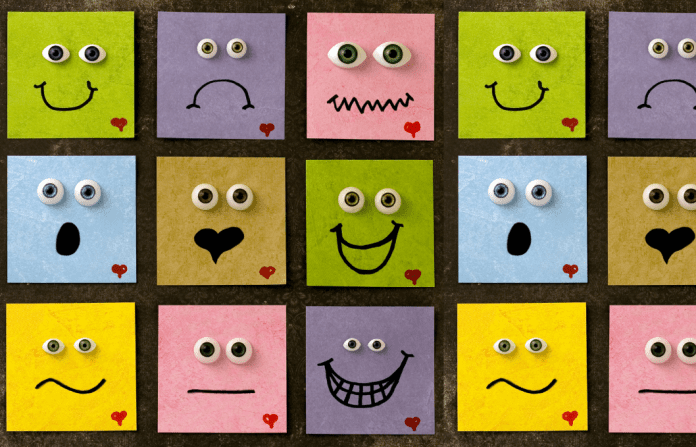The human brain is so amazing. The more we learn about it, the more we know we don’t know.
I find brain-based research fascinating. I recently learned about a condition that I didn’t know existed, but upon closer inspection makes sense: emotional poverty.
Most people are familiar with financial poverty: lack of means to provide for basic physical needs such as food, shelter, and clothing. Emotional poverty, as described by Dr. Ruby Payne, author of Emotional Poverty in all Demographics: How to Reduce Anger, Anxiety, and Violence in the Classroom, is when the integration and regulation of the brain are underdeveloped, the inner self is weak, and bonding and attachment is unstable.
Emotional poverty can last a lifetime and adversely affect such areas as school and job performance, personal relationships, and parenting. Dr. Payne is careful to point out that while this issue is carefully researched, it is not a clinical disorder.
I was introduced to Dr. Payne’s book during professional development at work within the context of examining how emotional poverty affects classroom behavior and academic performance. When I first heard this, several questions occurred to me:
- who suffers from emotional poverty
- what are the causes and effects
- how do we recognize and fix it, or better yet, ward it off?
How does one become emotionally impoverished?
 Dr. Payne states that emotional well-being is based on a child’s feeling of security and belonging. There is a growing body of research that supports a high correlation between emotional issues and learning (or lack there-of). Dr. Payne notes that emotional instability often manifests in bad behavior and that handling a discipline issue with traditional methods fails because the true issue of emotional instability is not properly addressed.
Dr. Payne states that emotional well-being is based on a child’s feeling of security and belonging. There is a growing body of research that supports a high correlation between emotional issues and learning (or lack there-of). Dr. Payne notes that emotional instability often manifests in bad behavior and that handling a discipline issue with traditional methods fails because the true issue of emotional instability is not properly addressed.
She also points out that it’s hard to change behavior but it’s easy to change the motivation for the behavior.
Answering the question of exactly how one becomes emotionally impoverished is not easy, but there are several contributing factors that create a feeling of “less than and separate from” in children: the death of a parent, bullying, racism, and mobility (moving a lot) chief among them.
Who suffers from emotional poverty?
The short answer: anyone. Emotional poverty is not demographic-specific. It affects all races, genders, ages, and income levels. And it’s not just something that children experience. Adults can also suffer the causes and effects of an unintegrated and unregulated brain, which in turn affects the way adults handle children that are emotionally unstable.
So it makes sense that when your child is trying to process the idea of a deployed parent, the death of a family member, or leaving friends behind after a PCS, so are you!
As parents, you can’t just magically turn your emotions off when a significant life event occurs. The effort of helping our children navigate life events while trying to process them ourselves is exhausting, and our own emotional state affects how we handle our children’s emotional state.
Recognizing and handling emotional poverty
Just as children go through stages of development, so do adults. Every decade of life brings about new perspectives and priorities just as it does for the developing child. The way we handle the slings and arrows that life throws at us depends not only on circumstance but also on life stages. Our twenty-year-old-self and our forty-year-self will most certainly handle the same situation in very different ways.  While trying to recognize the signs of emotional poverty in both children and adults, Dr. Payne cautions readers to beware of emotional noise that can contribute to emotional instability. Is it close to a holiday, a birthday, or a date significant for some other reason? The calendar can inadvertently exacerbate a volatile situation.
While trying to recognize the signs of emotional poverty in both children and adults, Dr. Payne cautions readers to beware of emotional noise that can contribute to emotional instability. Is it close to a holiday, a birthday, or a date significant for some other reason? The calendar can inadvertently exacerbate a volatile situation.
In discussing strategies to diffuse an episode of bad behavior associated with emotional poverty while trying to foster emotional stability, Dr. Payne offers several tactics to try.
For children, she suggests physical remedies designed to redirect and distract a distressed child that includes:
• Drinking a glass of water (it dilutes the cortisol released with anger)
• Tapping and touching
• Patting the heart and stomach
• Rhythmic breathing
For adults, some suggestions for long term emotional well-being include:
• Physical exercise
• Meditation/prayer
• Learning something new
• Practicing daily gratitude
In addition to regulating an unregulated brain, Dr. Payne also talks about self-constructing an inner self that encompasses both nurture and nature. She explores inherited tendencies along with aspects of nurturing throughout the phases of child development. Bonding and attachment are constant themes throughout the development process, and our ability or inability to trust is influenced by life experiences from the very beginning of life.
While we can’t avoid the life events that throw us for a loop, understanding how we react to such events along with brain development can go a long way in handling them in a healthy way. And knowing how to handle things ourselves makes it natural and easy to help our children maintain their emotional well-being. There will always be more to learn, but it’s a start.











